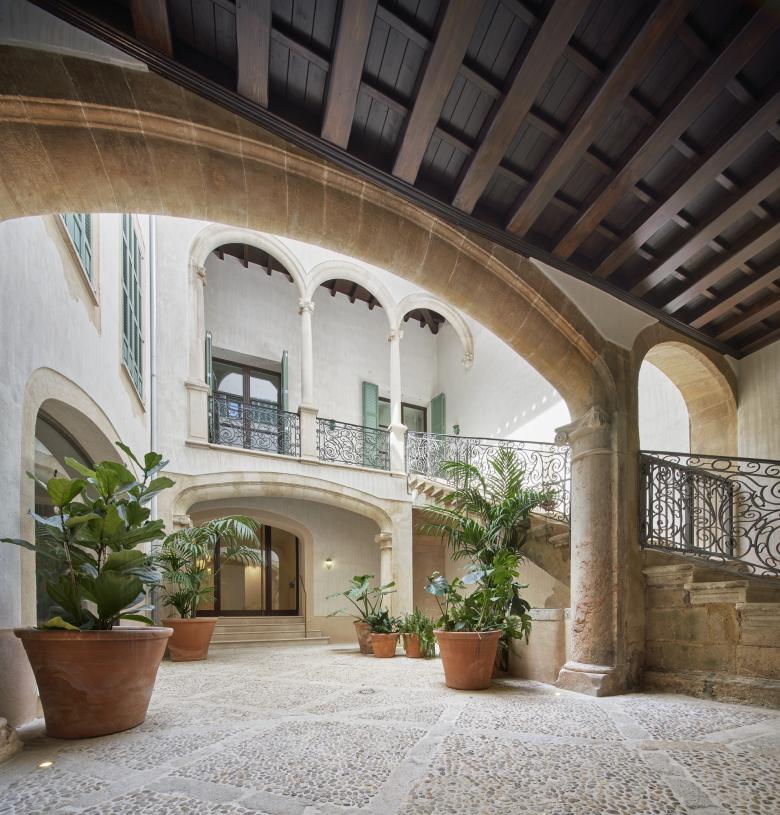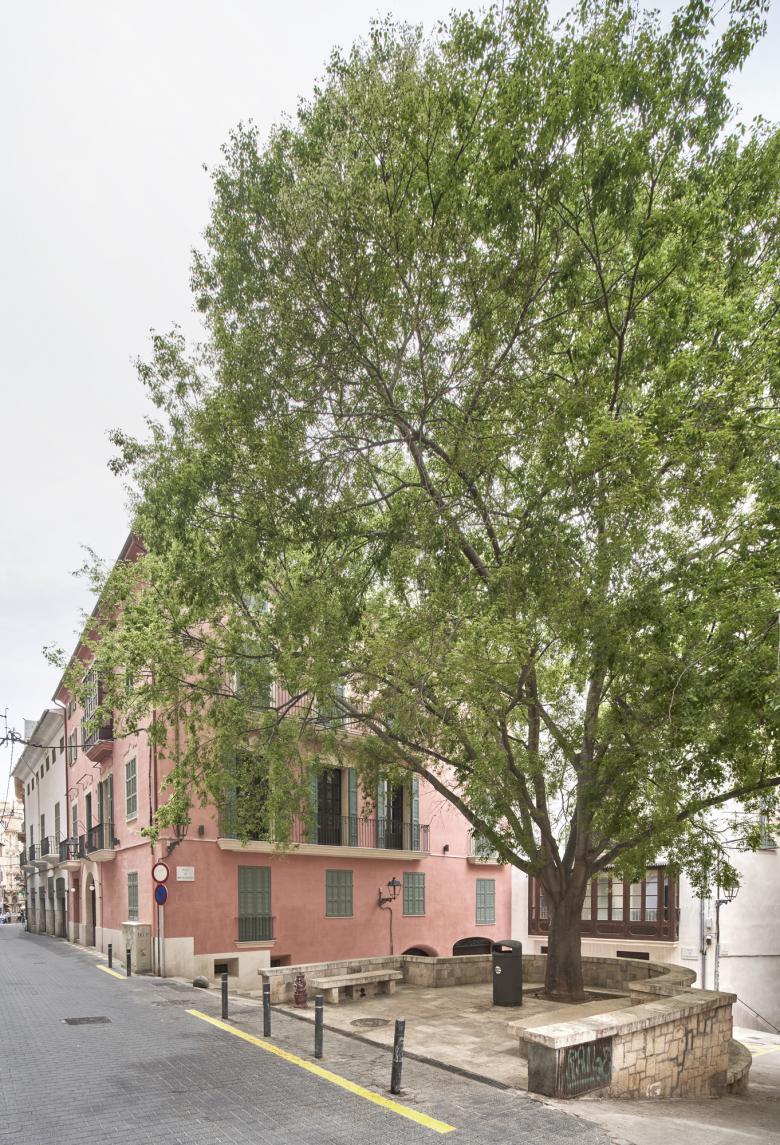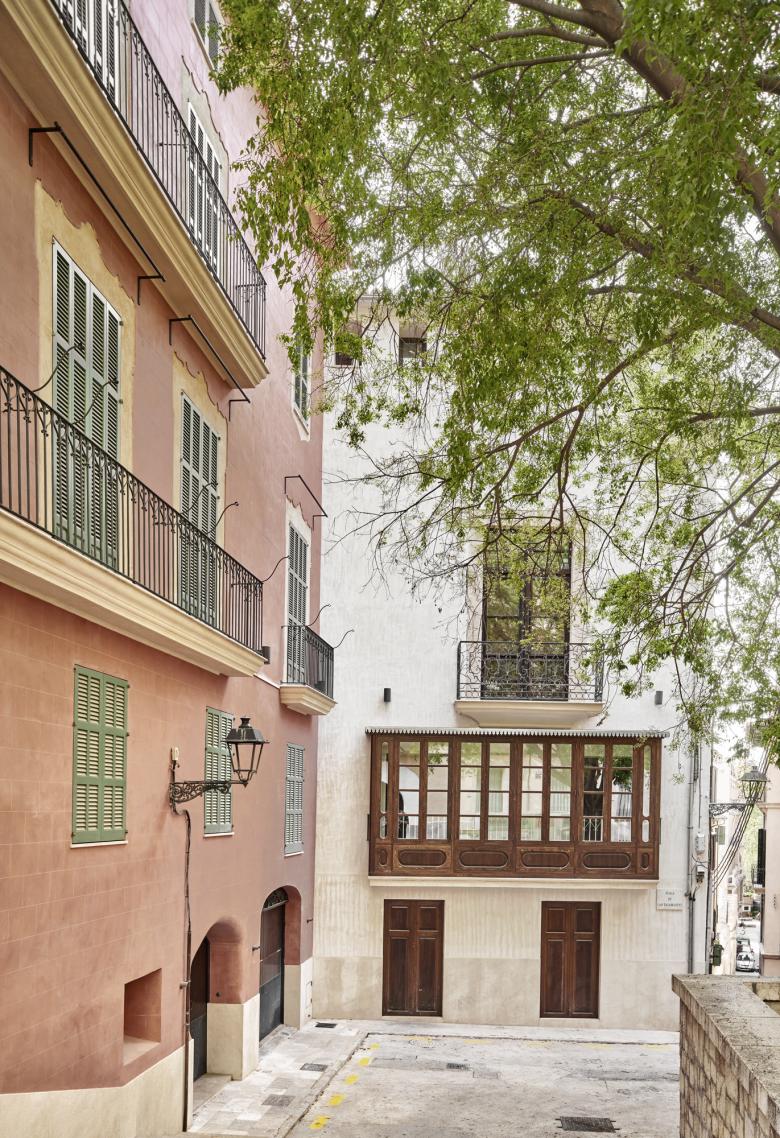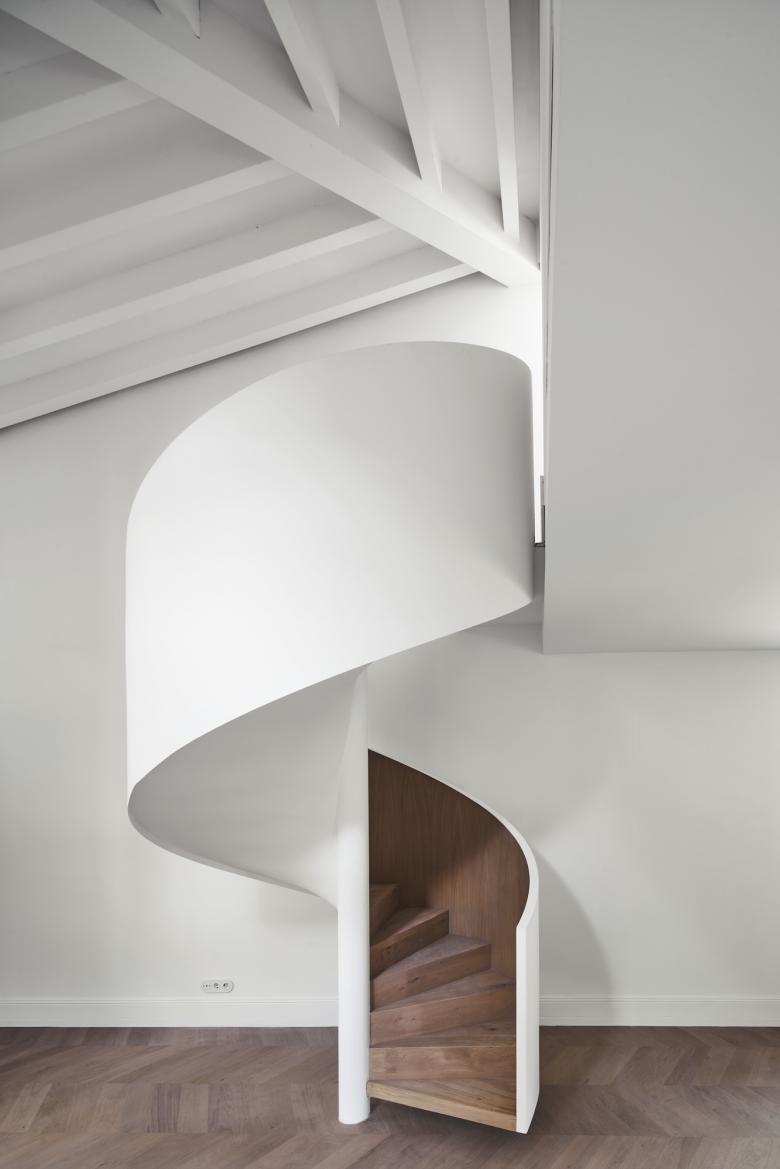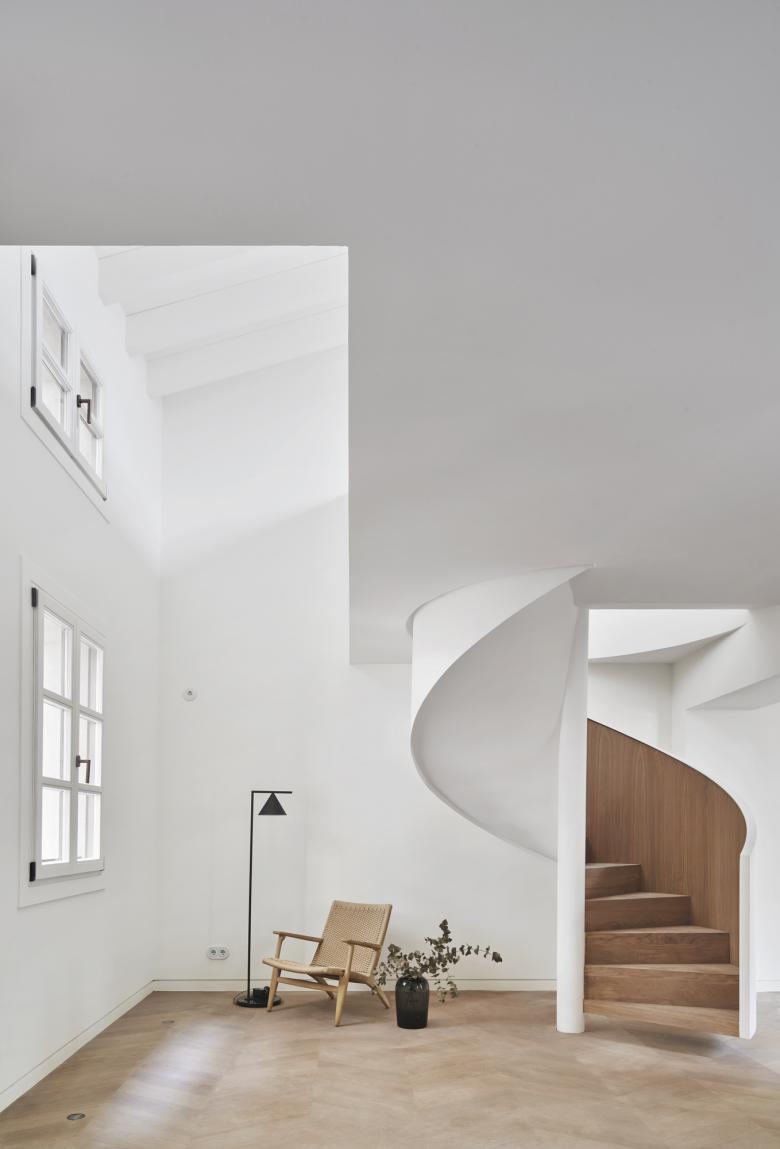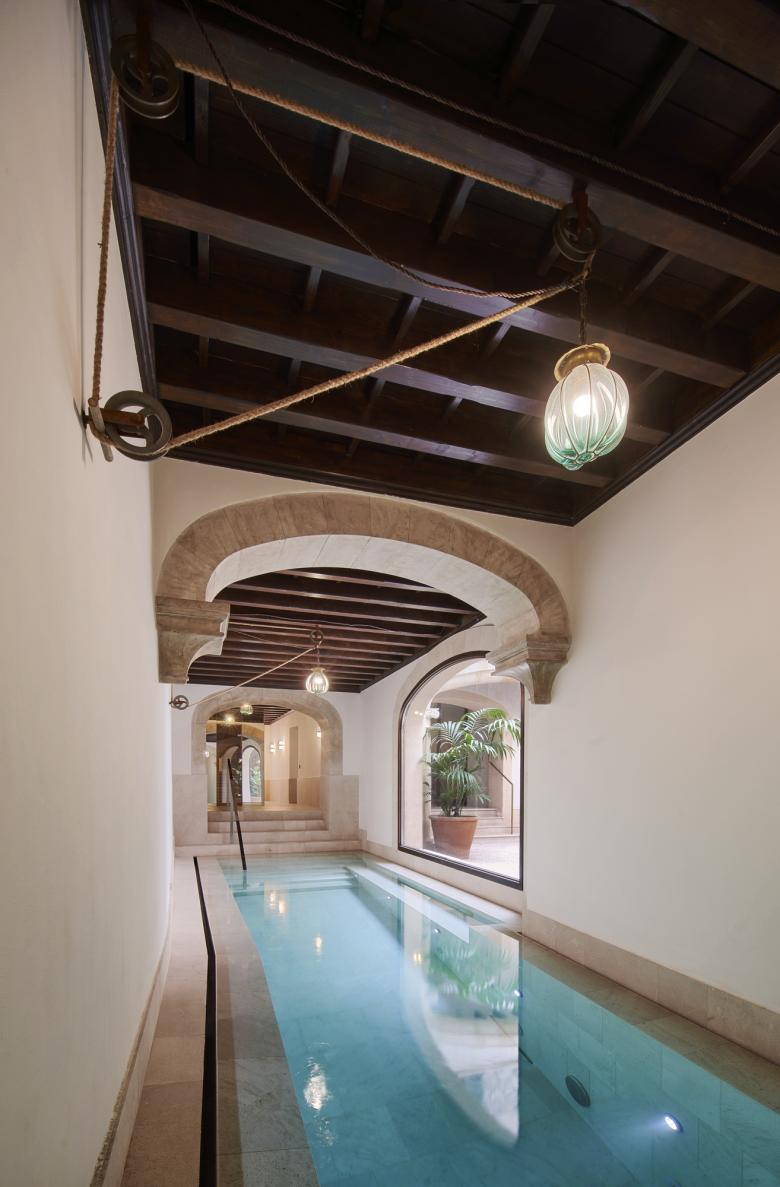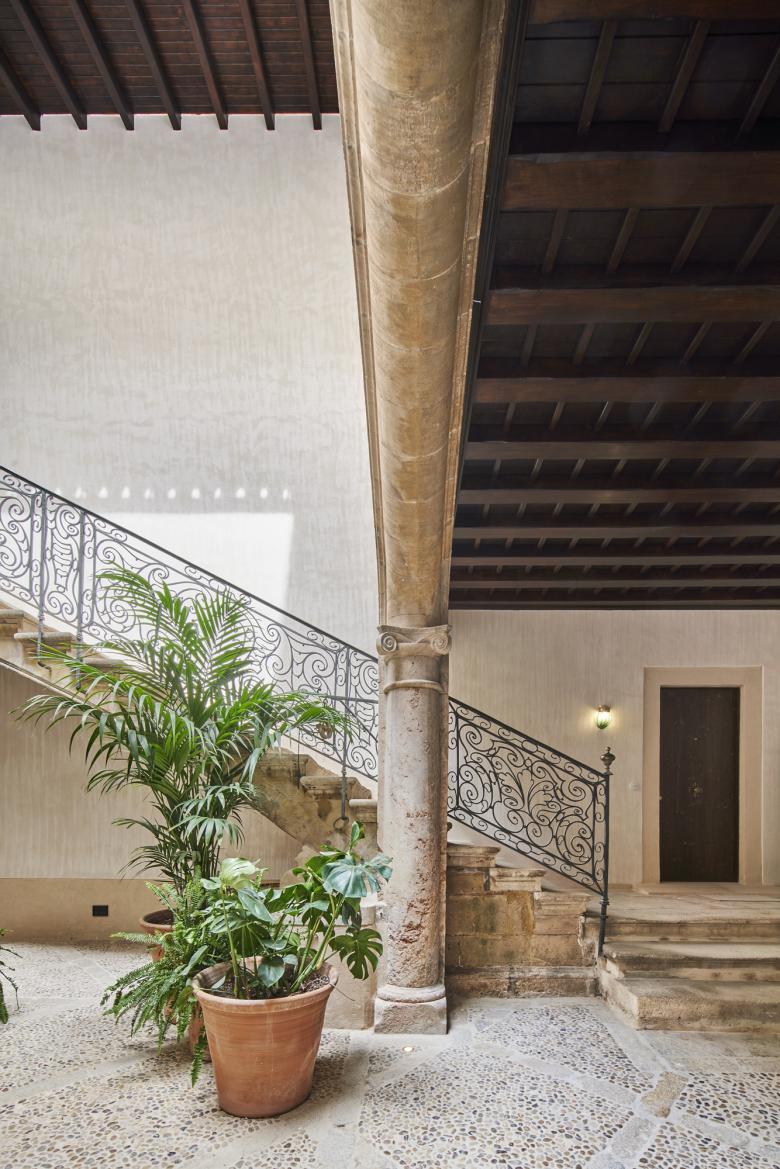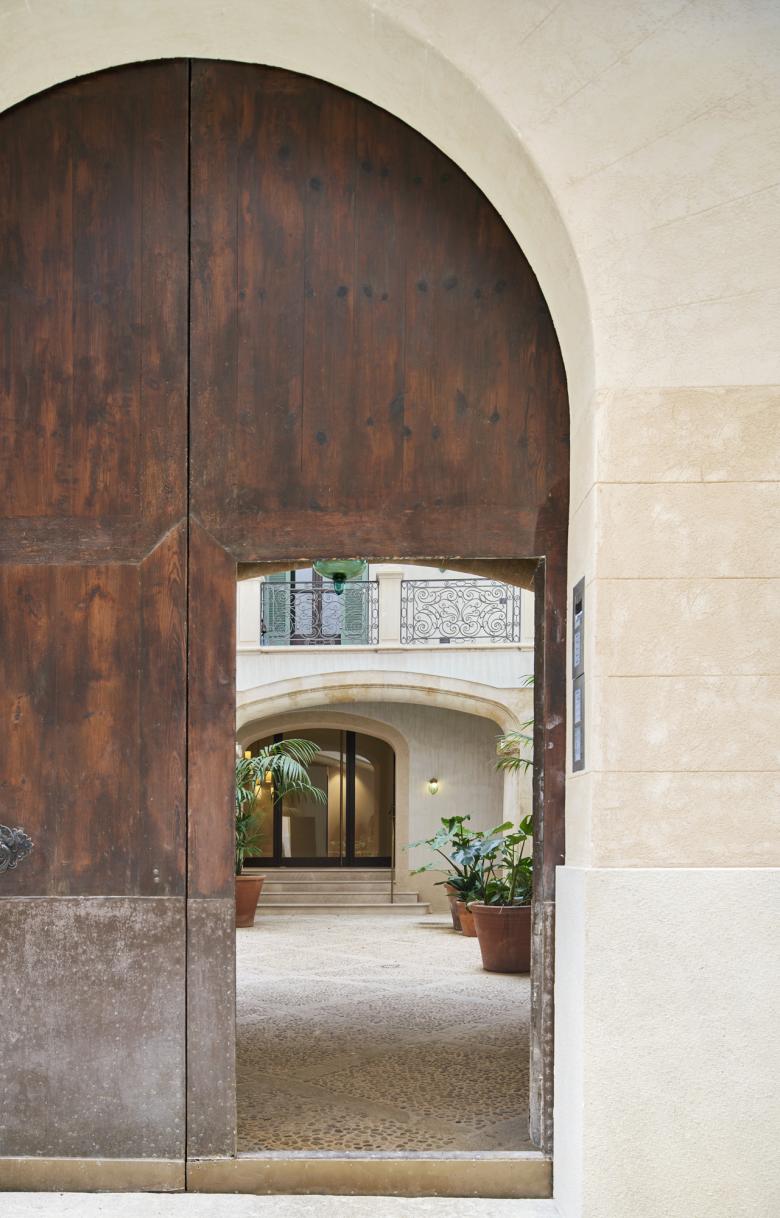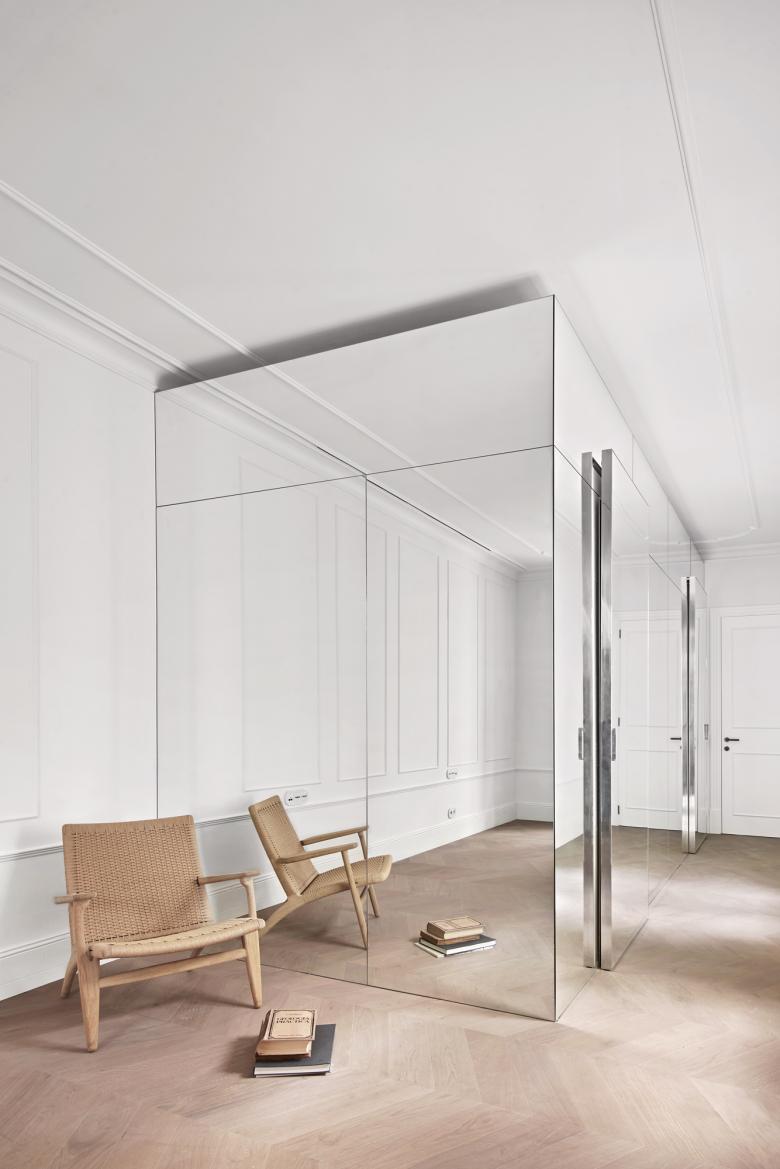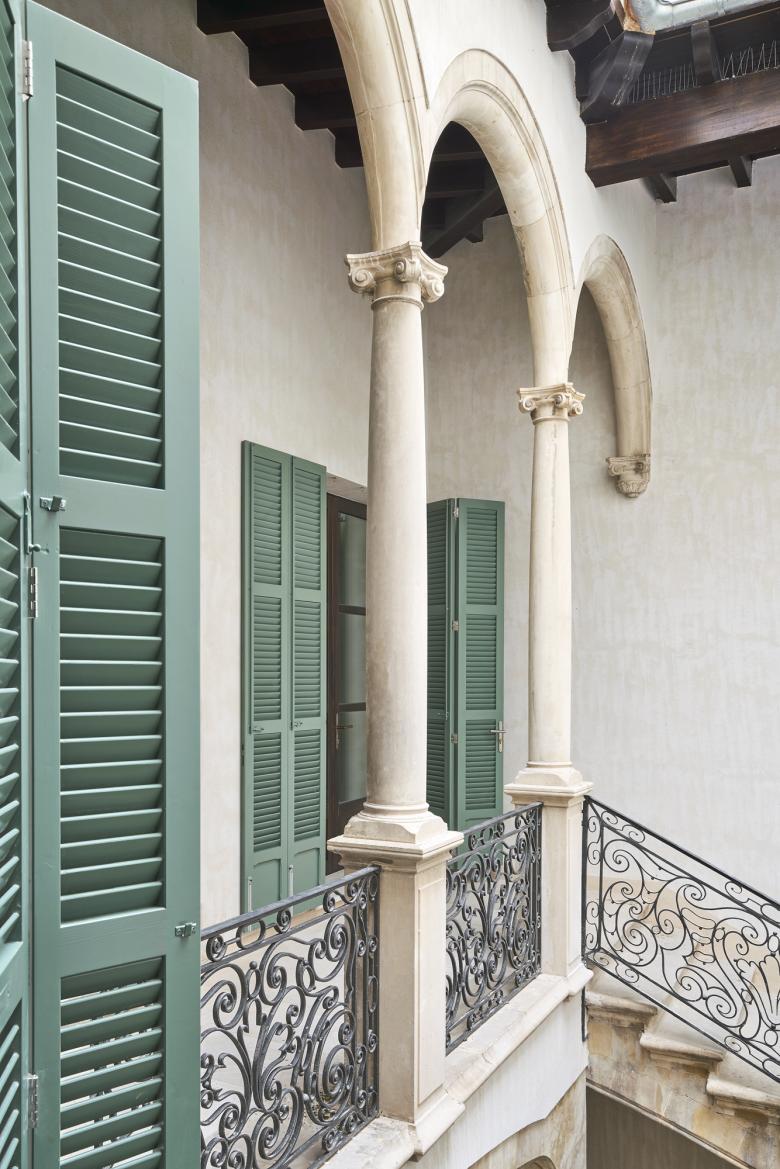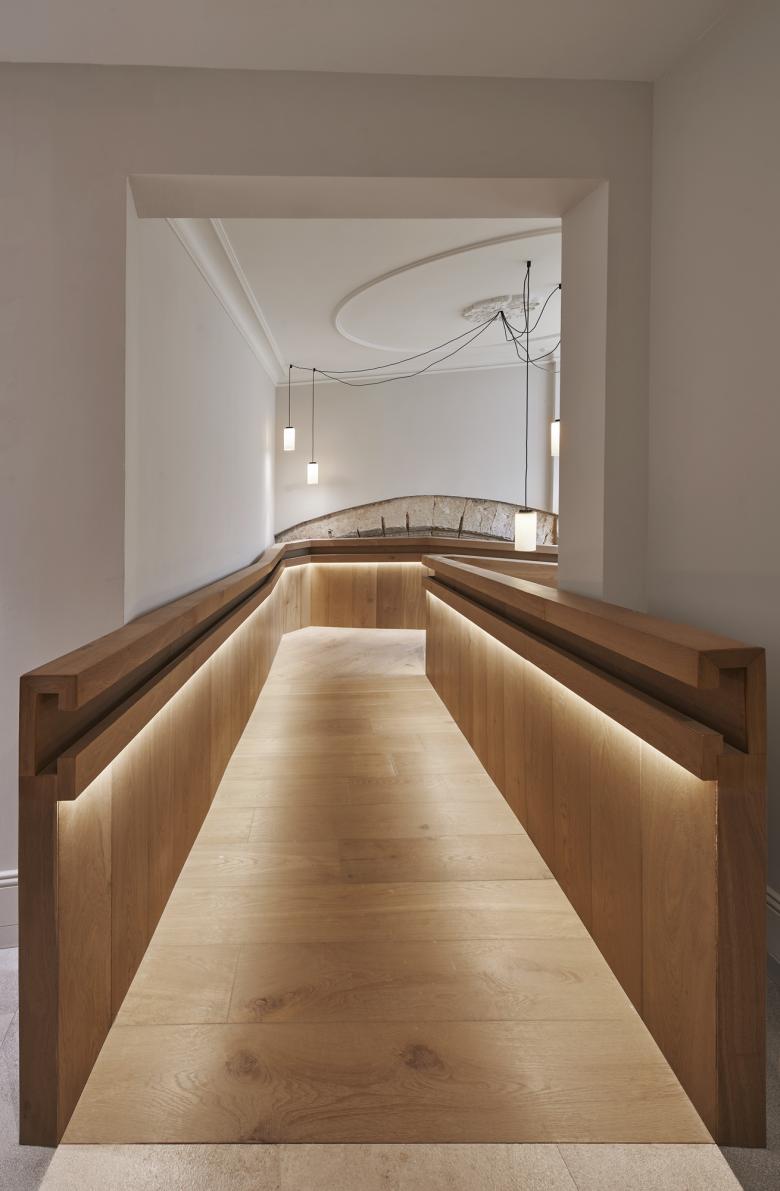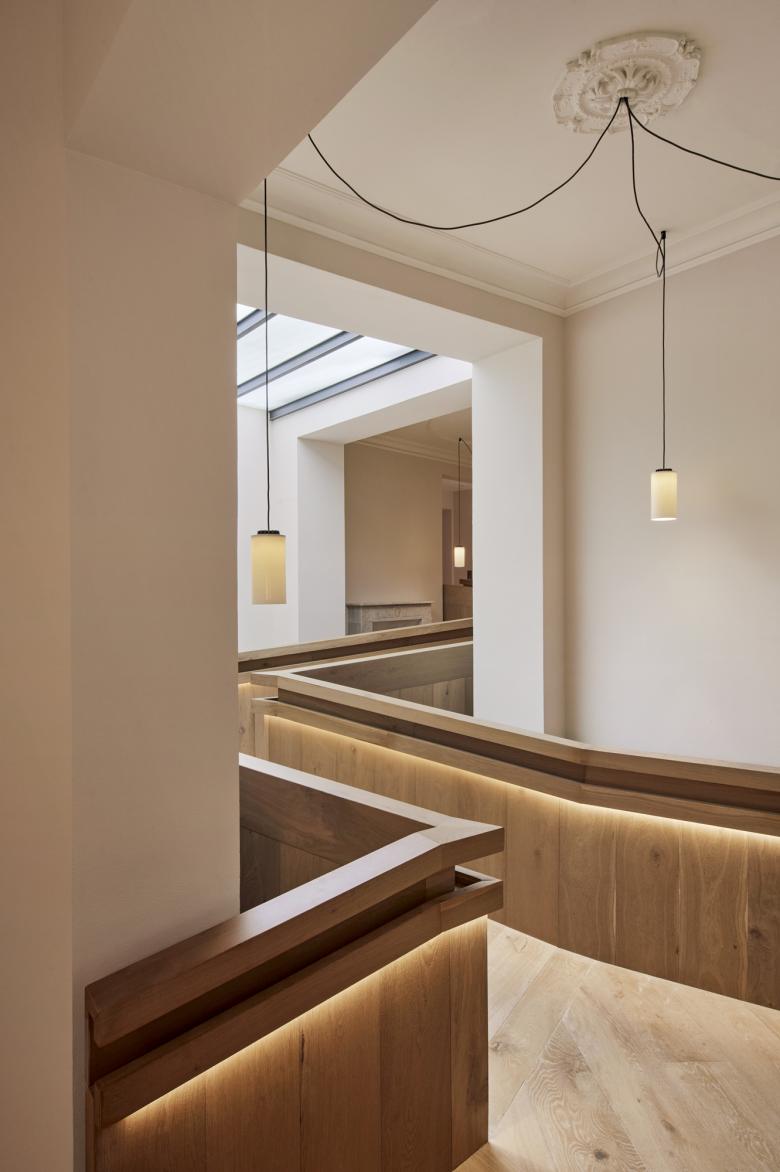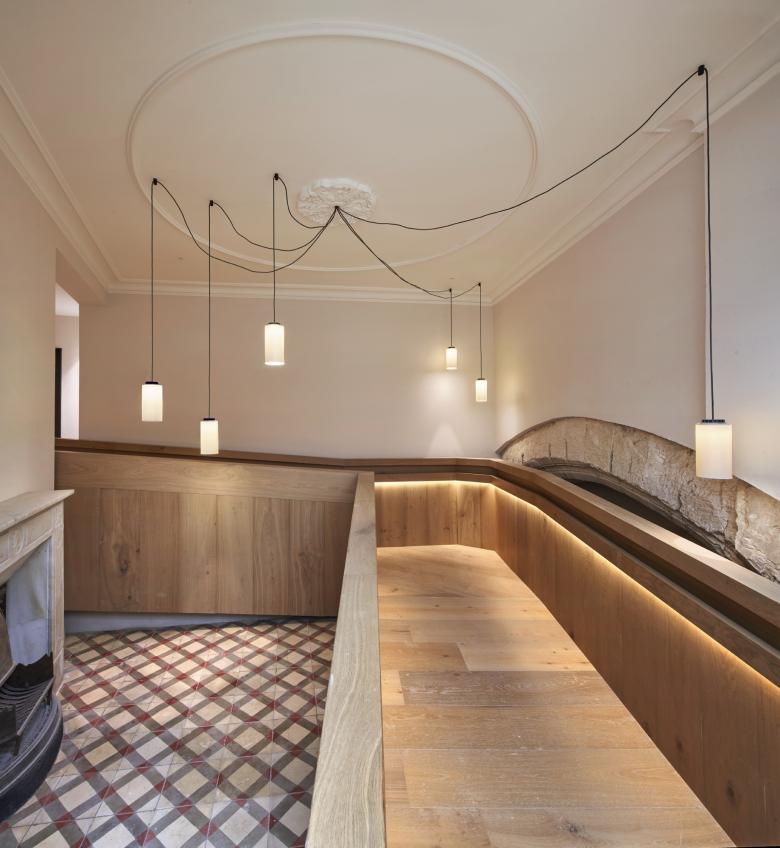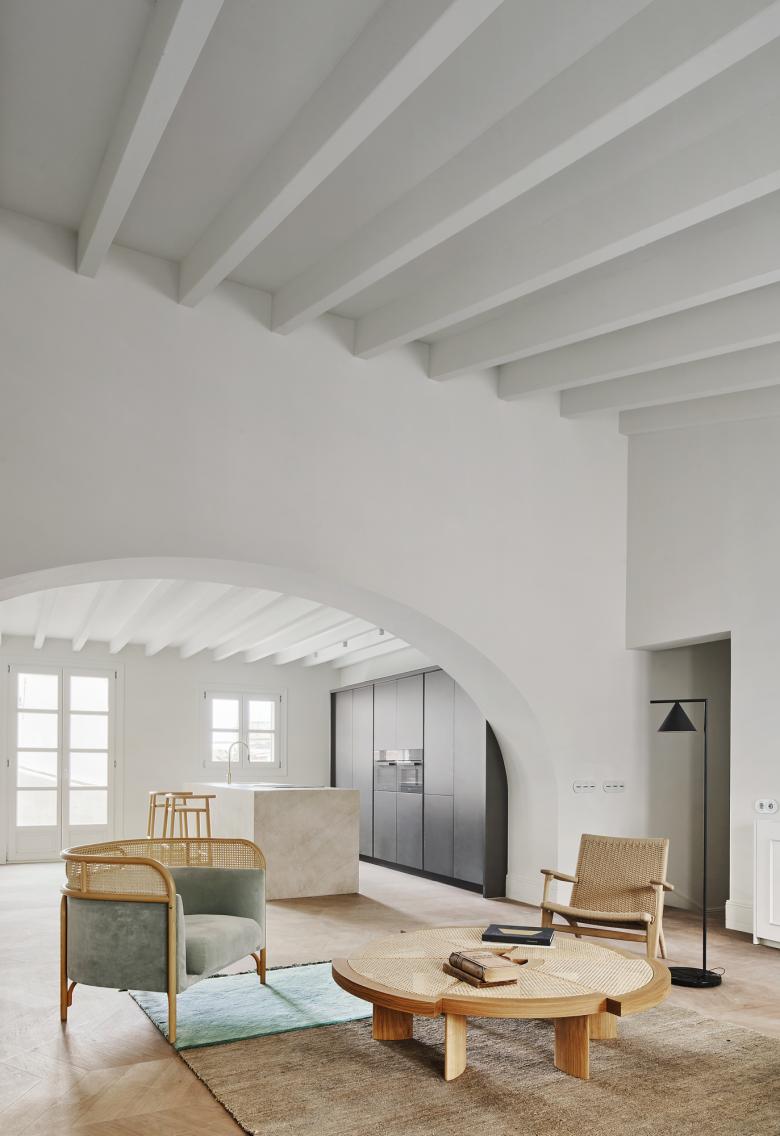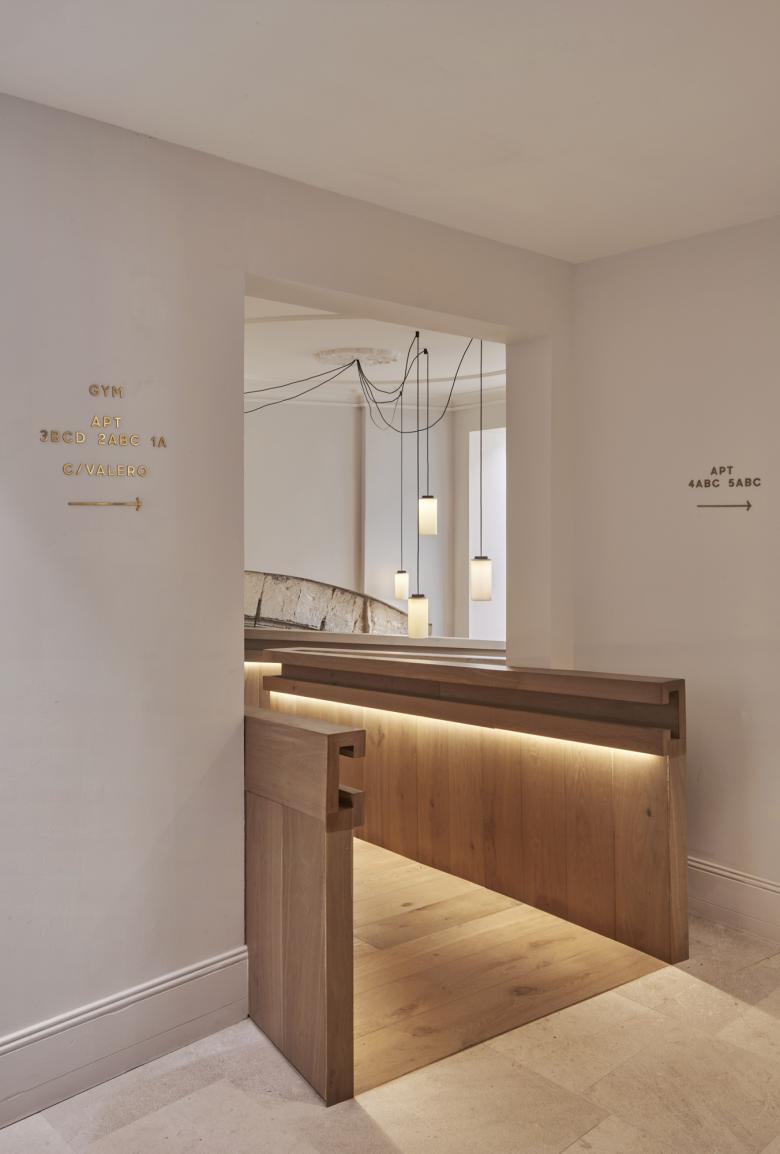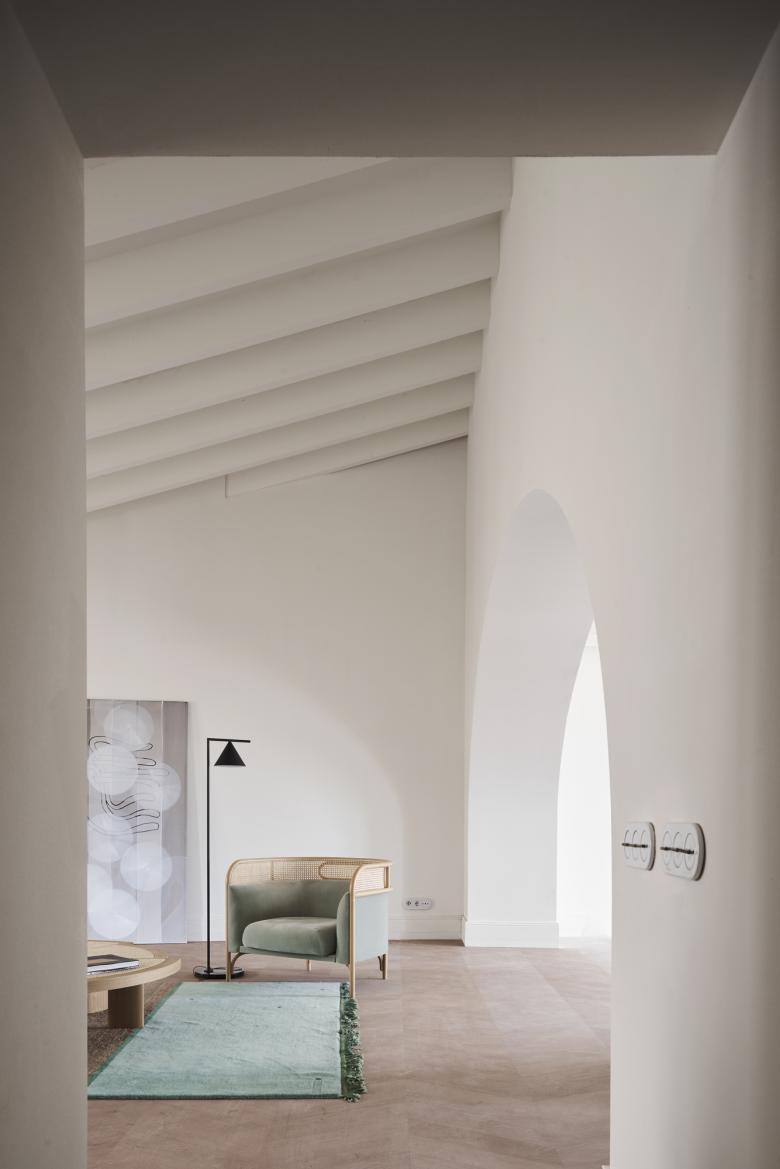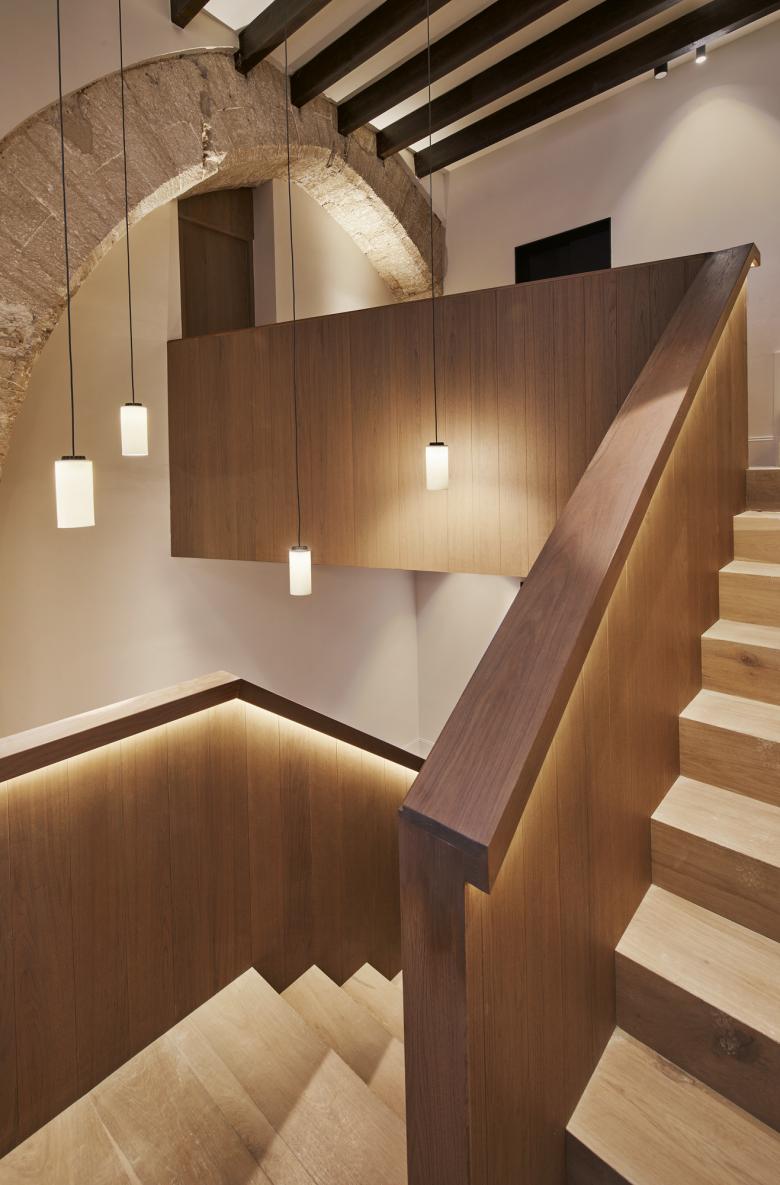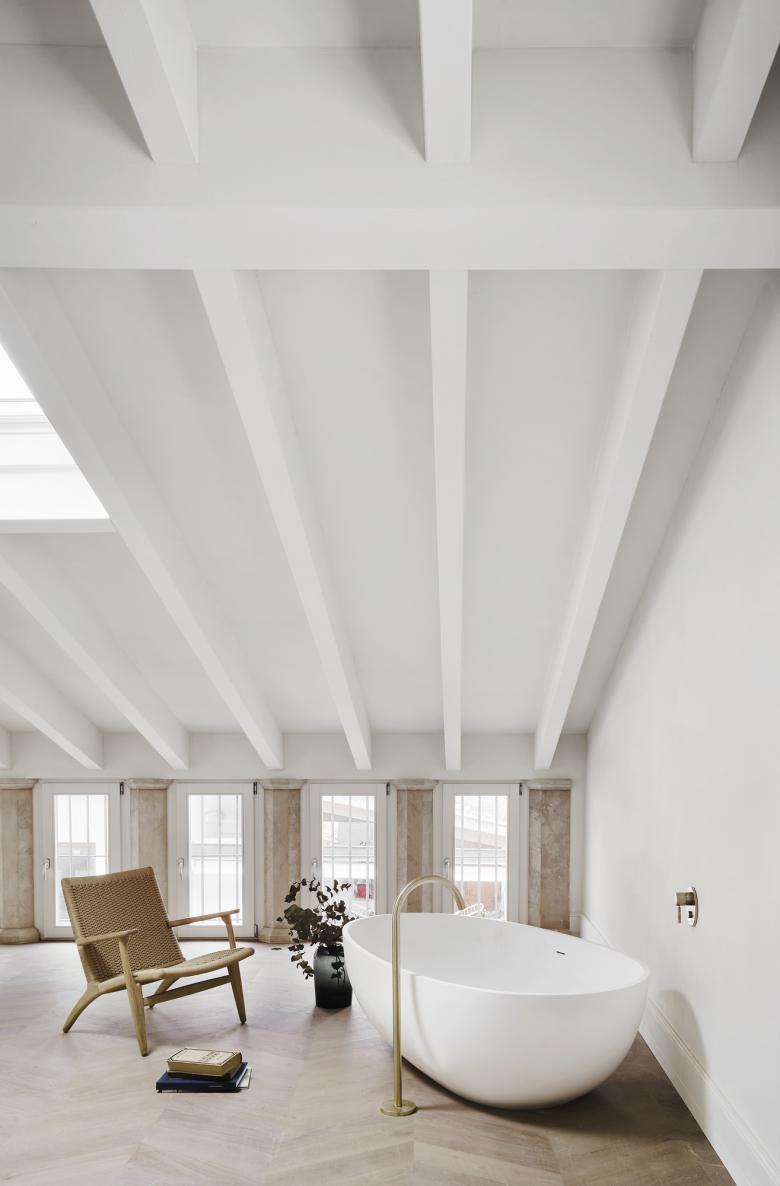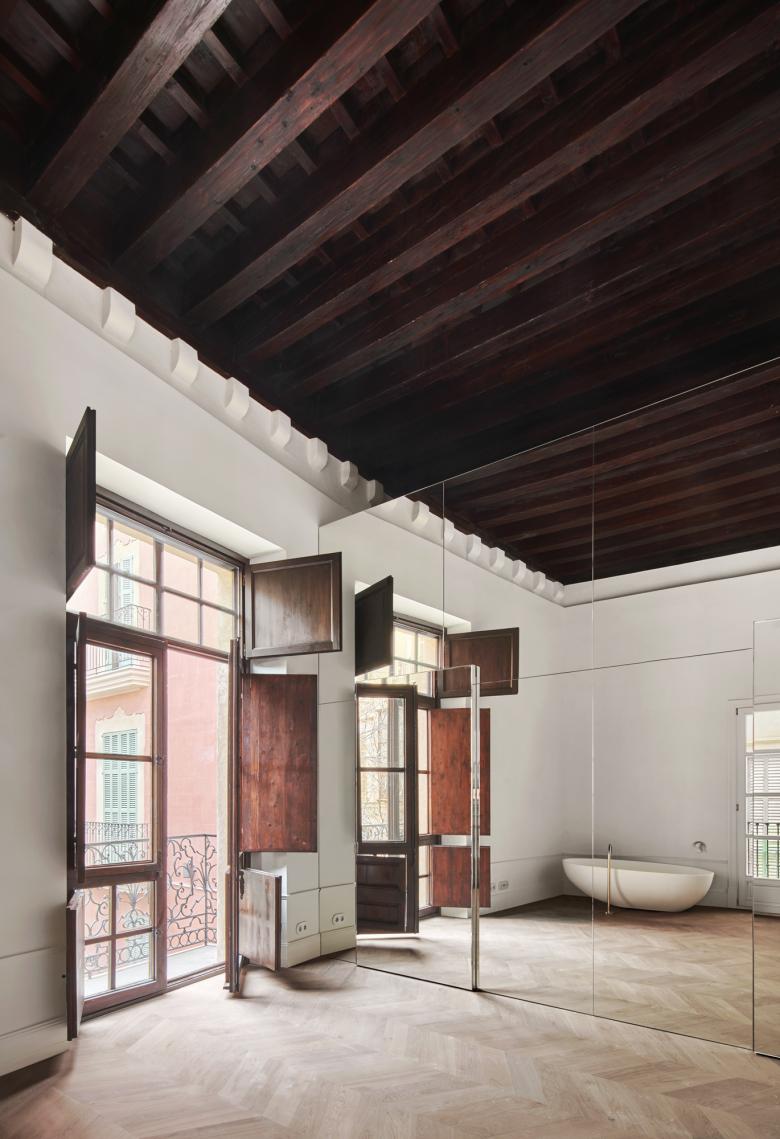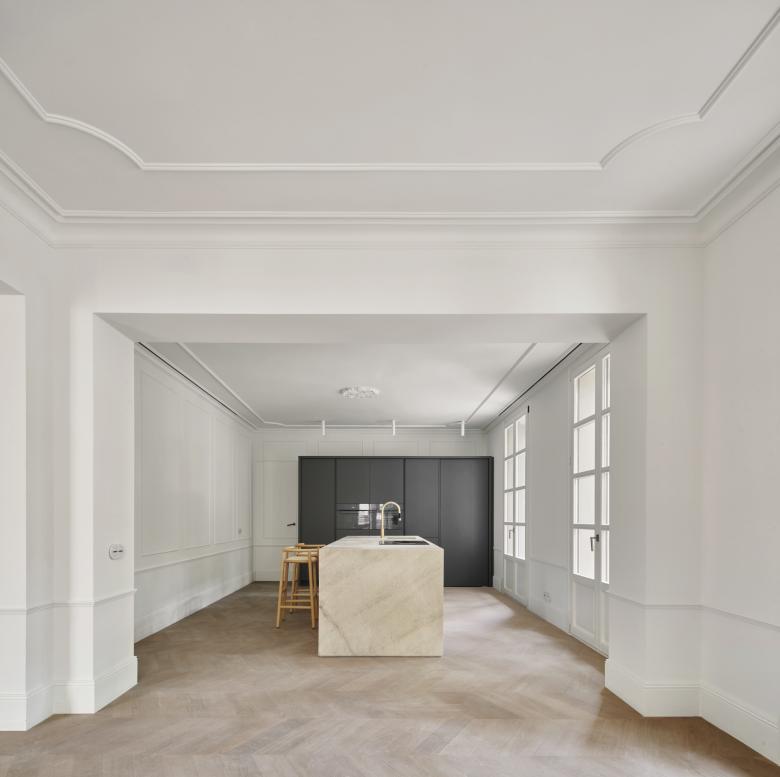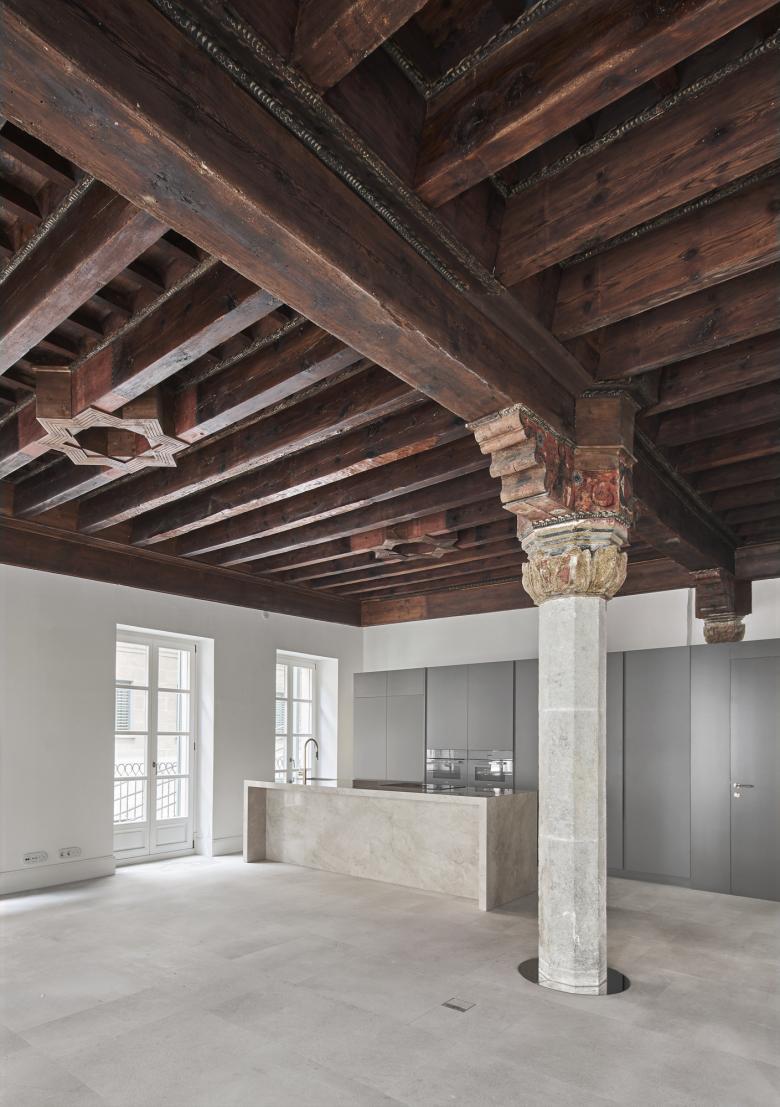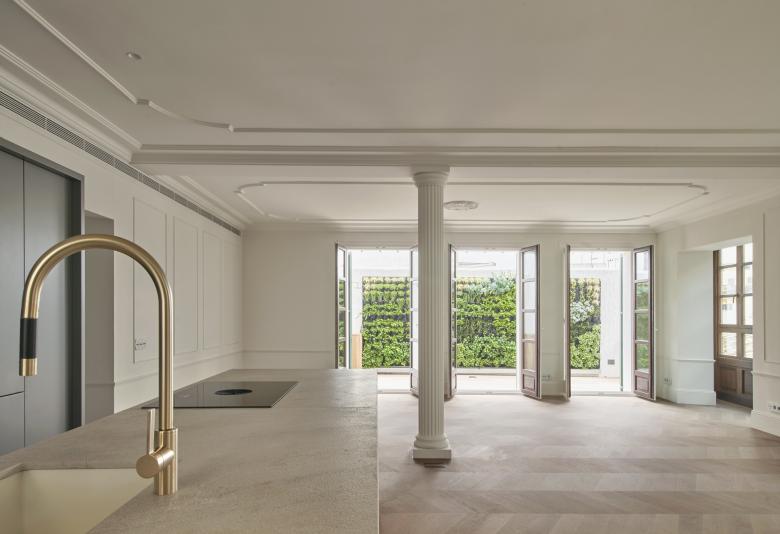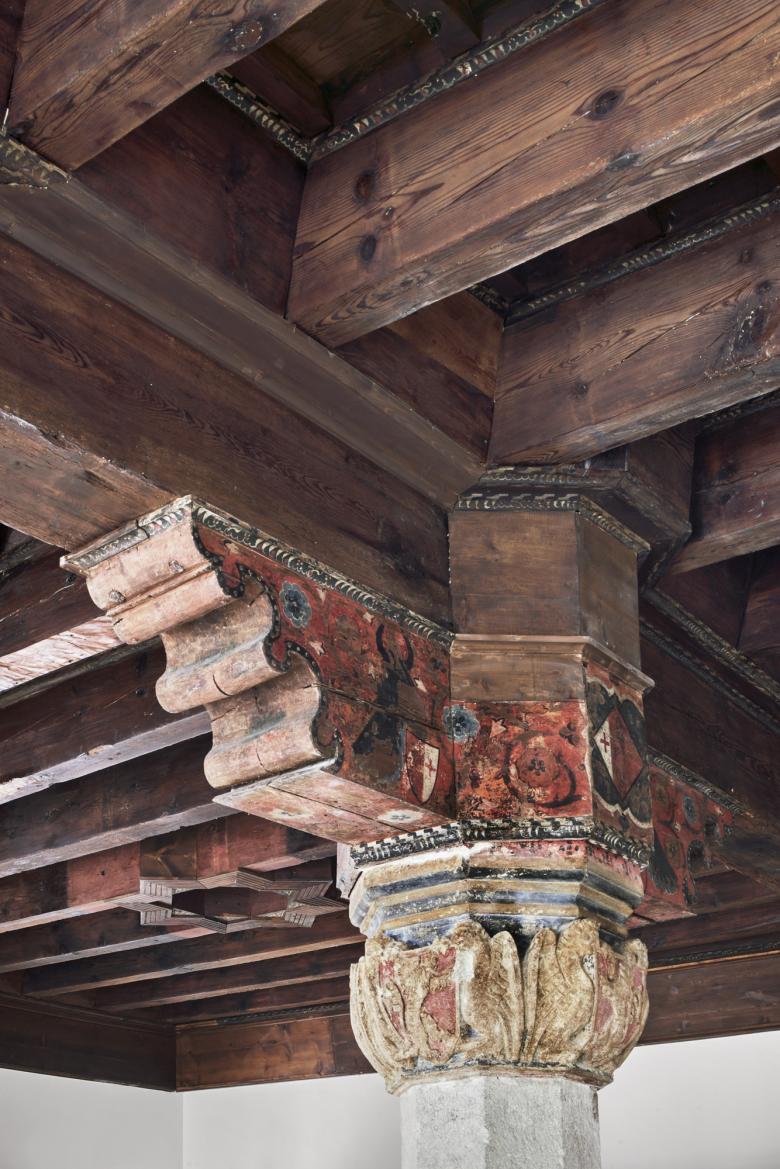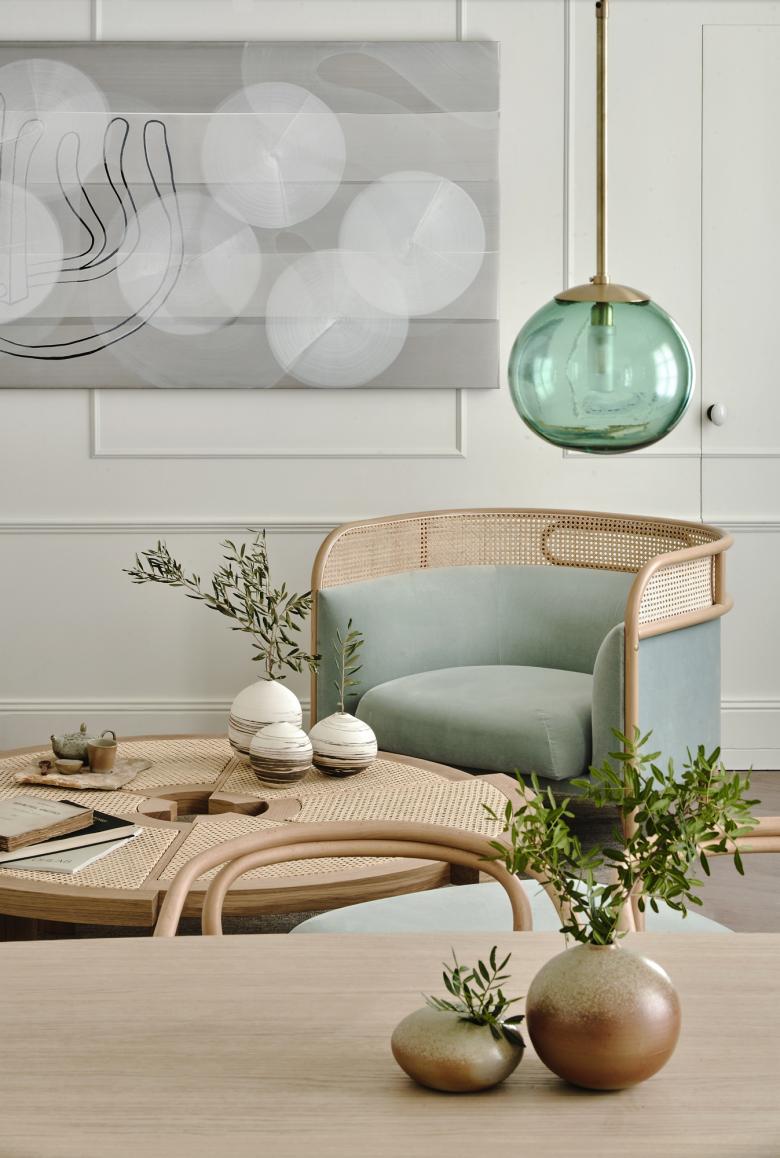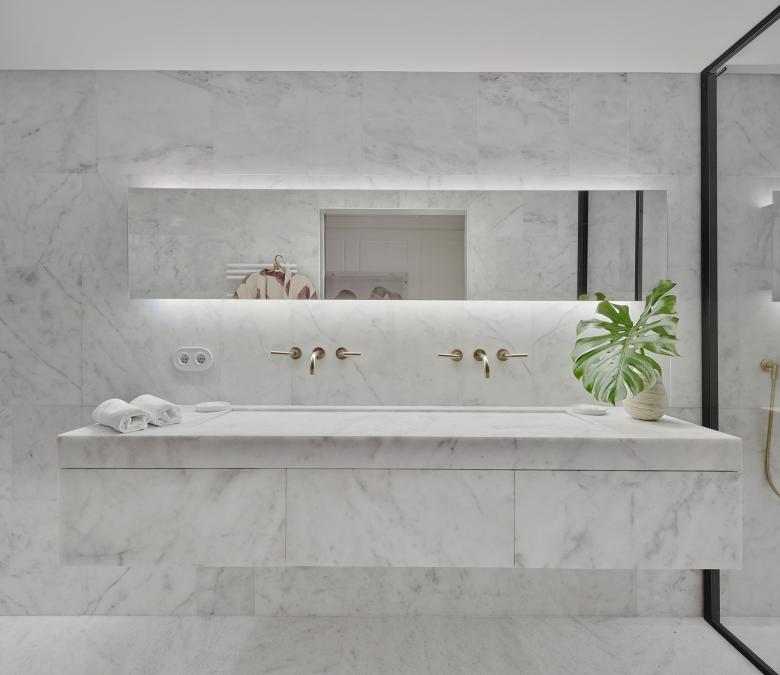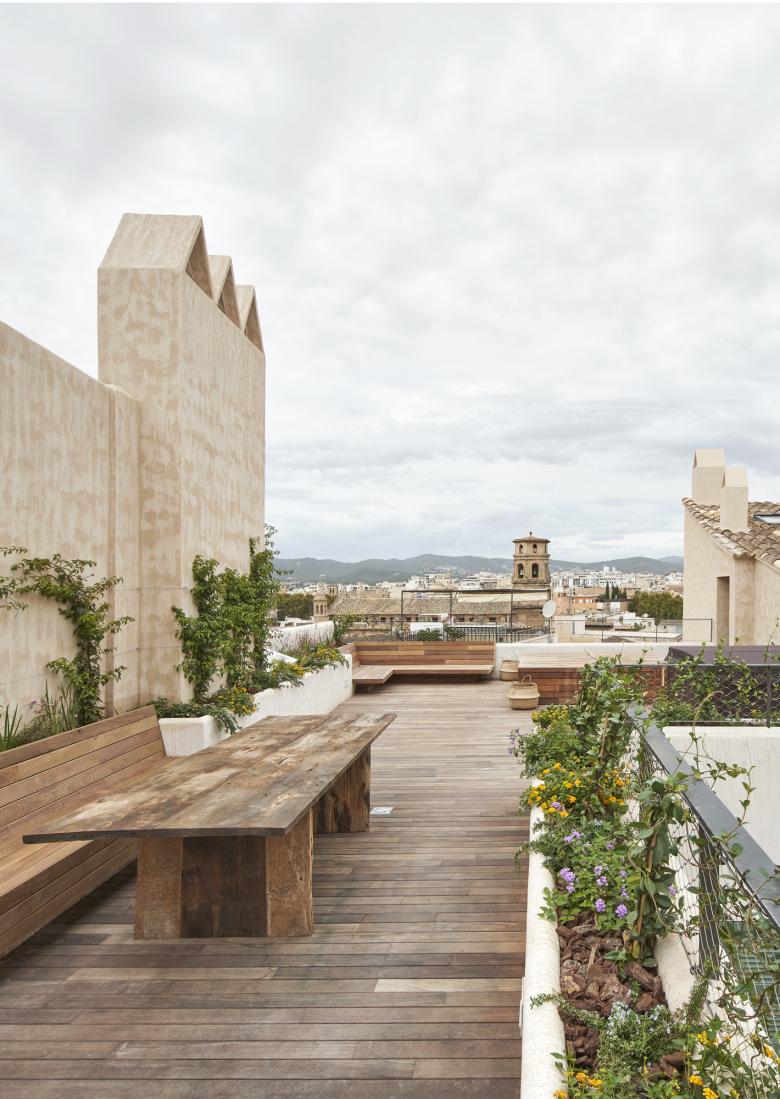Can Santacilia
Palma de Mallorca
- Architects
- OHLAB
- Location
- Plaça de Can Tagamanent, 07001 Palma de Mallorca
- Year
- 2022
- Team
- OHLAB
- Building engineer
- Jorge Ramón
- Structure
- AMM Technical group
- Facilities Engineering
- AMM Technical group
- General Contractor
- Diazgar
- Kitchen design
- Espacio Home Design
- Archaeologist
- Elvira González
- Artwork
- Pedro Oliver
- Graphic design
- Studio Roses
Can Santacilia is a 3,300 m2 residential project with 15 dwellings and common areas. It is a careful renovation of two buildings located in the heart of Palma de Mallorca old town.
The buildings dates back to the 12th or 13th century, although the building visible from Plaça Tagamanent was registered in the city archives in 1576 as Can Santacilia. Since then, both buildings have suffered several modifications, consequently the existing state prior to the OHLAB project is from the 17th century, with a subsequent reform in the 18th century. In addition, both buildings underwent alterations during the 20th century aimed at dividing and converting them into several dwellings, as a result we found it highly modified compared to their original state. The main courtyard was not in good condition, but it had a structure that deserved to be recovered, additionally his main façade preserved part of the 18th century decoration. In conclusion, although the buildings had a history of more than 400 years, we find them largely transformed and distorted.
The first challenge was that of historical responsibility, which begun with the investigation of the different interventions over time to discover, recover and give value to the main architectural elements and spaces. We didn’t try to erase and hide the alterations occurred throughout the history in order to recover an ideal past that we don’t really know, instead we tried to discover different stages and interventions, recognizing elements of value in each of them.
In order to made this operation efficient and reintegrate the building into the city’s activity, we decided to update their spaces and use for the 21st century.
On the one hand, a modern, comfortable residential building was required, with all the services and facilities needed in a contemporary lifestyle. On the other hand, we are faced with a complex and divided structure, difficult to integrate with a 16th century protected façade and volume.
The OHLAB renovation project takes advantage of the complexity of existing buildings as a potential to generate unexpected spaces. The intervention solves each house with a distribution and individualized solutions, combined with the new common areas and connections and making up the union of both buildings. The final result is a single building that bases its uniqueness on the recovery of the historical essence and on the commitment to contemporaneity.
The selection of natural, noble, local materials, emphasising the Mediterranean essence, has been key. A simple palette of natural materials is continued throughout the project. It combines the restoration of historical elements. These materials are combined with the introduction of new noble ones, such as antique bronze pieces, local stones, mirrored cloths, porcelain details, local linen and cotton textiles.
The project recovers the entrance courtyard that had been altered in the reforms of the last century, restoring the old splendor of this space. The courtyard becomes the main entrance to the heart of the building, communicating with the landscaped terraces upwards and with the communal areas such as a gym and an indoor swimming pool with a spa that directly overlooks the courtyard.
A second inner courtyard has been also recovered as a garden for one of the dwellings and five terraces for different dwellings.
Despite the constructive restrictions that a historic reform implies in a protected building, the project has been designed from the beginning with sustainability parameters, in order to maximize its energy efficiency, increasing thermal insulation, taking care of thermal bridges and using an efficient centralized air conditioning system.
Architecture and interior design: OHLAB / oliver hernaiz architecture lab
Team OHLAB: Paloma Hernaiz, Jaime Oliver with Rebeca Lavín, Robin Harloff, Maria Bruna Pisciotta, Mercé Solar, Luis Quiles, Silvia Morais, Ángela Suárez, Wiktoria Ginter, Camila Ospina, Pedro Rodríguez, Laura Colomer, Eusebiu Spac, Agustín Verdejo.
Related Projects
Magazine
-
Concéntrico 05
on 2/28/19
-
L'arquitectura d'autor patrimoni a Catalunya
on 11/29/18
